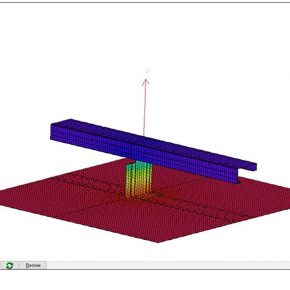
Advantages and Disadvantages of MDF
MDF is increasingly becoming one of the most used sheet materials in the construction industry – this trend can well be explained by weighing the advantages and disadvantages of MDF board.
What is MDF Board?
MDF (Medium Density Fibreboard) is an engineered wood product, manufactured by compressing softwood or hardwood fibres with wax and resin under high pressure and temperature. It is denser compared to particleboard and plywood and is used in both commercial and residential construction.
There are various MDF board advantages and disadvantages, as outlined below…
Advantages of MDF
Here are benefits of MDF which makes it a desirable and common engineered wood construction sheet material..
– Medium Density Fibreboard lacks grain, and it is easy to drill and cut without risking damage. Its high density makes it suitable to use machines on it.
– It has a smooth surface without kinks and knots.
– The panel can be stained or painted to mimic natural wood. Laminates and wood veneers can also be applied to MDF panels to mimic real wood appearance. As such, MDF is the best alternative to real wood when it comes to appearance.
– MDF doesn’t contract or expand due to temperature fluctuations like natural wood. The swelling that occurs in MDF due to exposure to moisture is also minimal. It is a dimensionally stable wood product.
– MDF holds better to hinges and screws thanks to its high density.
– MDF is easy to stain and apply colour, unlike natural wood which takes a long time to stain.
– Thanks to its smooth edges, MDF can easily be cut and carved into different designs.
– During the manufacturing process, MDF is treated with special chemicals that make it resistant to termites and other insects.
– Since it is engineered from wood remains, it is cheaper than natural wood. You get the appearance of real wood without spending much money.
– It is environmentally friendly since it is manufactured from recycled wood products.
Disadvantages of MDF
Even with all these advantages, MDF has some disadvantages that you should be aware of. They include…
– MDF doesn’t provide the strength as that of natural wood and therefore cannot withstand extreme stress. When put under pressure, it cracks or splits. The lifespan of furniture made of MDF is limited compared to those made of real wood.
– During the MDF board installation, you require a lot of nails since its density is lower compared to that of natural wood. The nails should be hammered at close intervals so that the board doesn’t droop in the middle.
– During manufacturing of MDF, formaldehyde is used and when cut, this harmful chemical is released. The chemical irritates eyes and is detrimental to the lungs if inhaled.
– MDF is dense and challenging to handle and need a lot of labour when cutting, sanding or installing.
– Hammering nails into MDF also needs one to be careful and take a lot of time. Once hammered, the wood doesn’t hold the nail back, and the displaced particles may spoil the surface. Therefore, you should sand the surface to smoothen it again.
– The tools used to cut MDF blunt faster since the MDF has high glue content.
Conclusion
It is vital to understand all the advantages and disadvantages of MDF before buying the product, as that would help you decide whether to opt for MDF or, alternatively, standard wood instead
Latest news

26th July 2024
Enfield Speciality Doors completes world-class project for Atlas Copco HQ
A rundown office and warehouse building completely transformed into a modern headquarters for Atlas Copco has been fitted with more than 120 internal fire doors from Enfield Speciality Doors.
Posted in Access Control & Door Entry Systems, Articles, Building Industry News, Building Products & Structures, Building Systems, Case Studies, Doors, Interior Design & Construction, Interiors, Posts, Restoration & Refurbishment, Retrofit & Renovation, Security and Fire Protection, Sustainability & Energy Efficiency, Timber Buildings and Timber Products, Wooden products
26th July 2024
Abloy UK launches new white paper
Abloy UK, a leading provider of security and access control solutions, has launched a new white paper.
Posted in Access Control & Door Entry Systems, Architectural Ironmongery, Articles, Building Industry News, Building Products & Structures, Building Services, Doors, Facility Management & Building Services, Health & Safety, Information Technology, Innovations & New Products, Publications, Research & Materials Testing, Security and Fire Protection
26th July 2024
MCRMA Member Profile: David Roy, Director of Roofconsult
David Roy of MCRMA member company Roofconsult has more than 50 years’ experience to draw upon working in the building envelope sector and a unique perspective on how it has changed in that time.
Posted in Articles, BIM, Infrastructure & CAD Software, Building Associations & Institutes, Building Industry News, Building Products & Structures, Building Services, Building Systems, Cladding, Information Technology, Restoration & Refurbishment, Retrofit & Renovation, Roofs, Walls
26th July 2024
Strand: Enhancing Door Functionality and Safety
Craig Fox, Sales Director for Strand Hardware, outlines how door industry professionals might apply door limiting stays…
Posted in Architectural Ironmongery, Articles, Building Industry News, Building Products & Structures, Building Services, Doors, Facility Management & Building Services, Health & Safety, Restoration & Refurbishment, Retrofit & Renovation
 Sign up:
Sign up: